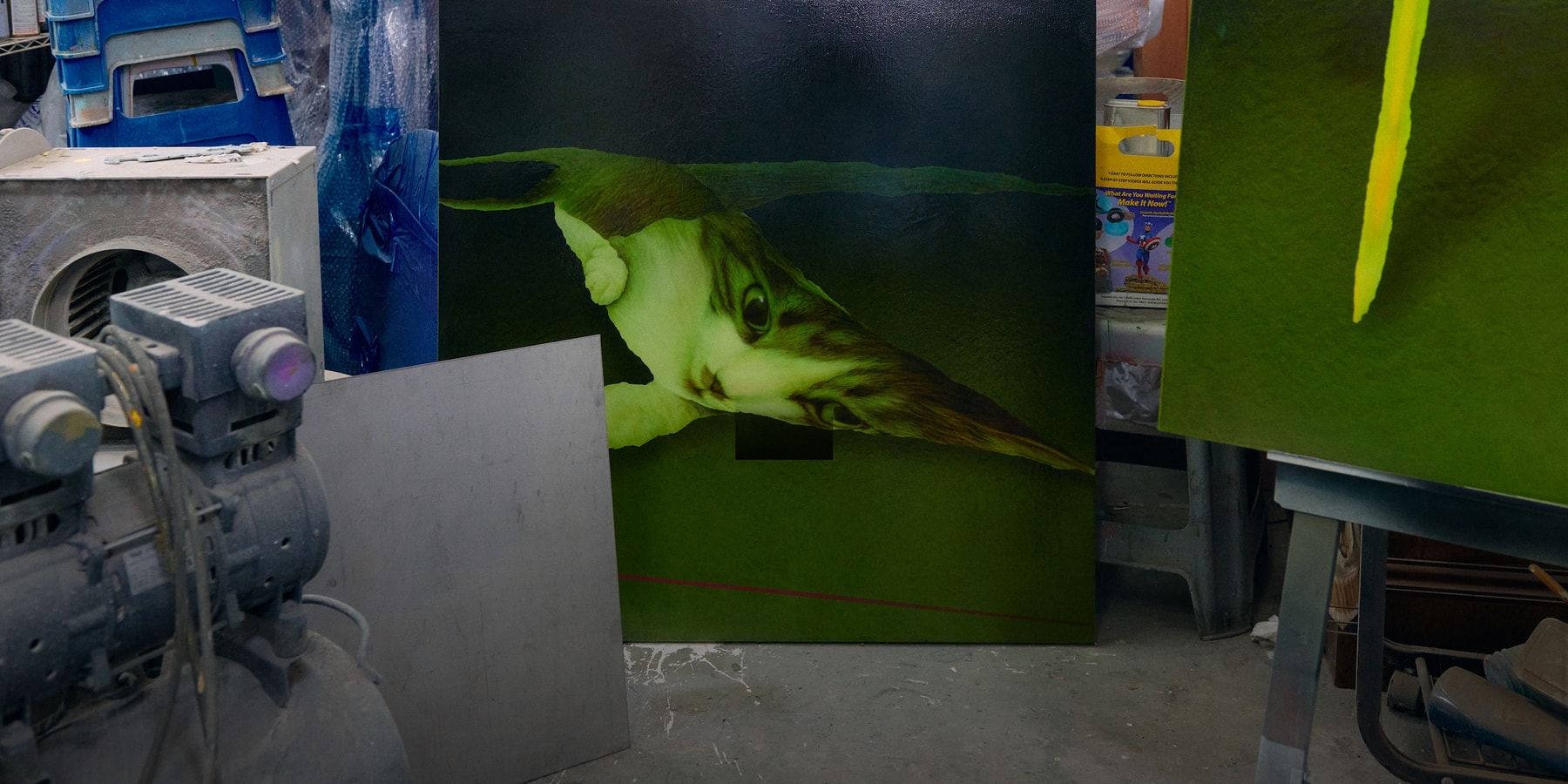
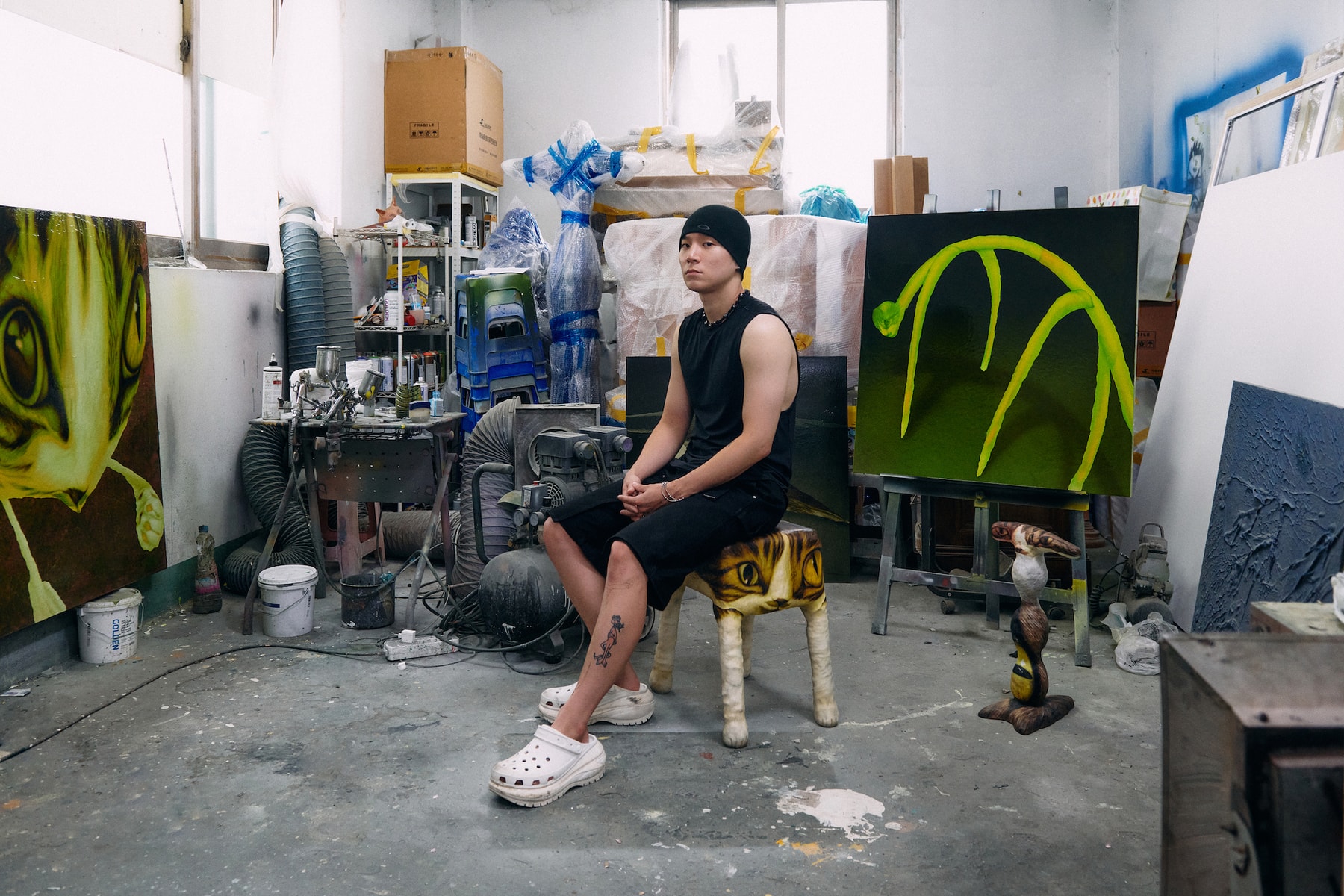
Ahn Tae-Won, aka Ppuri, uses his art to express the unruly, overwhelming elements of the Internet age. Ppuri’s on a mission to blur the lines between the virtual and real, making images that tug at both worlds. His creations are like a visual rollercoaster, mixing things up in a surreal yet whimsical way.
He’s got this wild technique where he twists and bends familiar images. It’s like he’s airbrushing life onto objects, kind of like how digital whizzes slap 2D images onto 3D models. The result? A total blur between what’s real and what’s digital. Back in 2015, Ppuri started messing with custom canvases and trippy grids, giving off a sci-fi vibe. Over time, he teamed up with tech-savvy artists to explore all sorts of formats. He even went wild by throwing internet memes right onto his paintings and sculptures, showing how our world communicates through images.
Born in Seoul in ‘93, Ppuri finished up his art studies at Chung-Ang University. He kicked off his art career with a group show in 2015 and slowly climbed the ladder to solo exhibitions in Seoul and New York by 2022, with a bunch of other exhibitions in between. In 2022, Ppuri dropped his third solo show, Copy & Paste, at Gallery STAN. It was a visual motley of paintings and 3D art. The same year, he launched a solo exhibition at Gallery STAN New York and followed up with exhibitions such as Newtro at Everyday Gallery Belgium Antwerp and Universes 5 at The Hole NYC.
Until recently, the artist’s main sources of inspiration were his cat Hiro and digital memes, but he has now embarked on a journey to draw creative inspiration from various aspects of his daily life. As he collected memes fervently for his work, these once-enjoyable references began to induce visual fatigue rather than pleasure. Immersed in the rapid creation and consumption of digital images, Ppuri sensed a transformation within himself, as if the internal mechanism measuring the essence of images had malfunctioned. Consequently, he’s adopted a more skeptical stance toward his formerly lighthearted approach to imagery, shifting his focus toward different facets of reality. Nevertheless, he aims to blend the essence of reality with the enduring digital sensibility that continues to be an integral part of his life.
Through it all, Ppuri sees the digital world as an extension of our reality. He uses different mediums, shapes, and spots to mess with the line between what’s real and what’s not. Besides his paintings and sculptures, he’s always cooking up collaborations with emerging artists and putting on exhibitions that ride the wave of image-based communication in today’s contemporary art world and beyond.
For our latest Hypeart Visits spotlight series, we connected with the Seoul-based artist to discuss his uncanny digital meets physical art practice, his love for Internet cats and more.
“The world is full of rules, but artists should have a space in their hearts where laws and rules don’t exist.”
Would you mind sharing some insights about your artistic journey and what initially sparked your inspiration to delve into painting cats within surreal settings?
While the territory of digital media permeates through reality, the time exposed to digital images has increased. I started enjoying the vast digital sea and made digital memes into the real artwork (such as ‘the crying cat’). However, the fast-paced birth and death process of digital image generated visual fatigue and started ruining my inner device that measures the soul of the image to function inappropriately. Even real-life subjects and events with physical traits became ever-lightening like volatile digital memes. That’s why I wanted to focus on just one real object, without using various memes, my cat ‘Hiro’. I think there is not much about art. It can be heavy, it can be light, as long as it’s from honesty, as Martin Scorsese said, ‘the most personal is the most creative.’ Of course, being open and personal can be both easy and difficult. The world is full of rules, but artists should have a space in their hearts where laws and rules don’t exist. That’s where you can find the ‘personal’, which I am still working on, too.
Your style often combines elements of realism and surrealism. Could you walk us through your creative process, from the inception of an idea to the completion of a painting?
The image of my cat Hiro from my artwork is structured in a way that forms memes: cut and paste, distortion, exaggeration, omission, and more. It can be easily reformed and vanished in the digital world, but they don’t in the real world. Physical supporter, canvas or sculpture, grabs the volatile images and forcefully fastens them into reality. I think how the images edited in digital methods come to life in the material world makes the viewers feel a sense of incompatibility. Working process is similar to that. I make digitally edited images and paint them onto custom-made canvas or sculpture using airbrush. Like the ‘texture mapping’ in 3D programs, it’s like covering a 3D model with a 2D image.
“Cat pictures used to be consumed as “innocent and cute” in the digital world, but it implies a somewhat strange vibe now, doesn’t that seem suspicious?”
Growing up in Seoul during a period of rapid transition from analog to digital technology must have had a profound impact on your art. Could you discuss how this influence has shaped your approach to integrating digital and analog aspects into your work?
I am from the 90’s, the middle man of analog and digital. At the time when the digital media was growing, there was an indefinite fantasy about it but now I rather want to keep the value of the analog world, because eventually the actual senses are what’s important. However, that doesn’t mean I deny the growth of the digital world, I’m just trying to take precaution in order to digest them well. I think that’s the reason for the outcome of my work being not all cute and not all weird, but the middle-man-like aura. It is an output of an ironic concern, ‘Could we, the humans, follow the speed of these accelerating advancement and saturation of digital media?’ Cat pictures used to be consumed as “innocent and cute” in the digital world, but it implies a somewhat strange vibe now, doesn’t that seem suspicious?
Considering the ever-expanding influence of digital media on our daily lives, how do you envision the evolving role of art in the digital age, and how do you position your creations within this dynamic landscape?
There are various roles for art in this era. Some artists fully embrace the advanced technology of digital media, some visual artists are deeply immersed in their own world and at the same time act as observers of their real world, which I think of as a good artist. As the digital media is deeply penetrated into reality, artists cannot exclude them for good but I think they will accept and recreate them in their own ways. In my case, like I have said, I will be in the middle, continuously learning about digital media and at the same time have the stance to run away from it (running away doesn’t mean intentionally, I just tend to not work well with digital technology).
“When I am using the airbrush, I feel like I am a human printer and that is not a very good feeling.”
As an artist navigating the intersection of traditional canvas painting and the digital realm, what do you perceive as the most significant challenges and opportunities within this dynamic artistic space?
I don’t think I paint traditional canvas art because my main material is airbrush and it doesn’t make contact with the canvas like a paint brush. I used to paint with paint brushes, and it feels very different from now. When I am using the airbrush, I feel like I am a human printer and that is not a very good feeling. For that, I try to use paint brushes too nowadays. Other than feeling like a printer or a robot, I assume there are not many difficulties. Outside of work, since the current society is highly interested in digital media, luckily my artwork gained attention, and I am very thankful for that opportunity.
Do you have any particular pieces among your cat-themed artworks that hold special significance or stand out as personal favorites, and if so, what makes them particularly meaningful to you?
The very first sculpture I made of Hiro is meaningful to me (though I don’t have it now). Because it was the first piece I made of a 2D digital image into a 3D materialized shape, it was the start I broaden my senses.
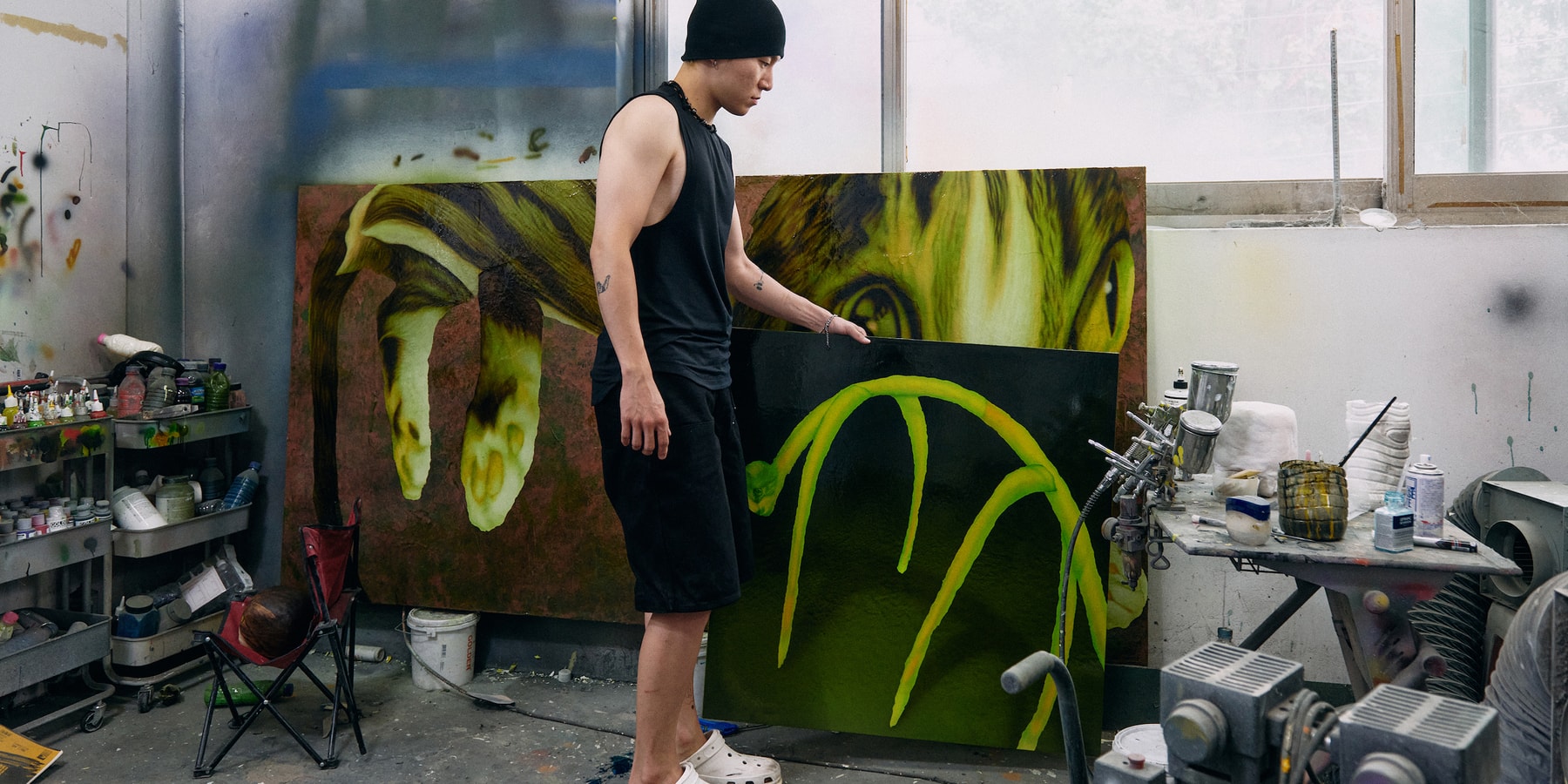
“When I am using the airbrush, I feel like I am a human printer and that is not a very good feeling.”
What messages or emotions do you aspire for viewers to glean from your paintings, particularly those who may not be well-versed in the realm of surreal art or the symbolism surrounding cats?
“This is really weird. But the more I look at it, the cuter” would be the best result.
Could you provide a glimpse into any upcoming projects or exhibitions where you plan to further explore the captivating interplay between the digital and analog aspects in your art?
I am having a solo exhibition in May, 2024. Until now I have been focusing on the presence of the object. Now I want to further expand my view, using space more actively than an object. How I am going to make that happen will be the things to look forward to in the next exhibition.
All images courtesy of the artist exclusively for Hypeart.

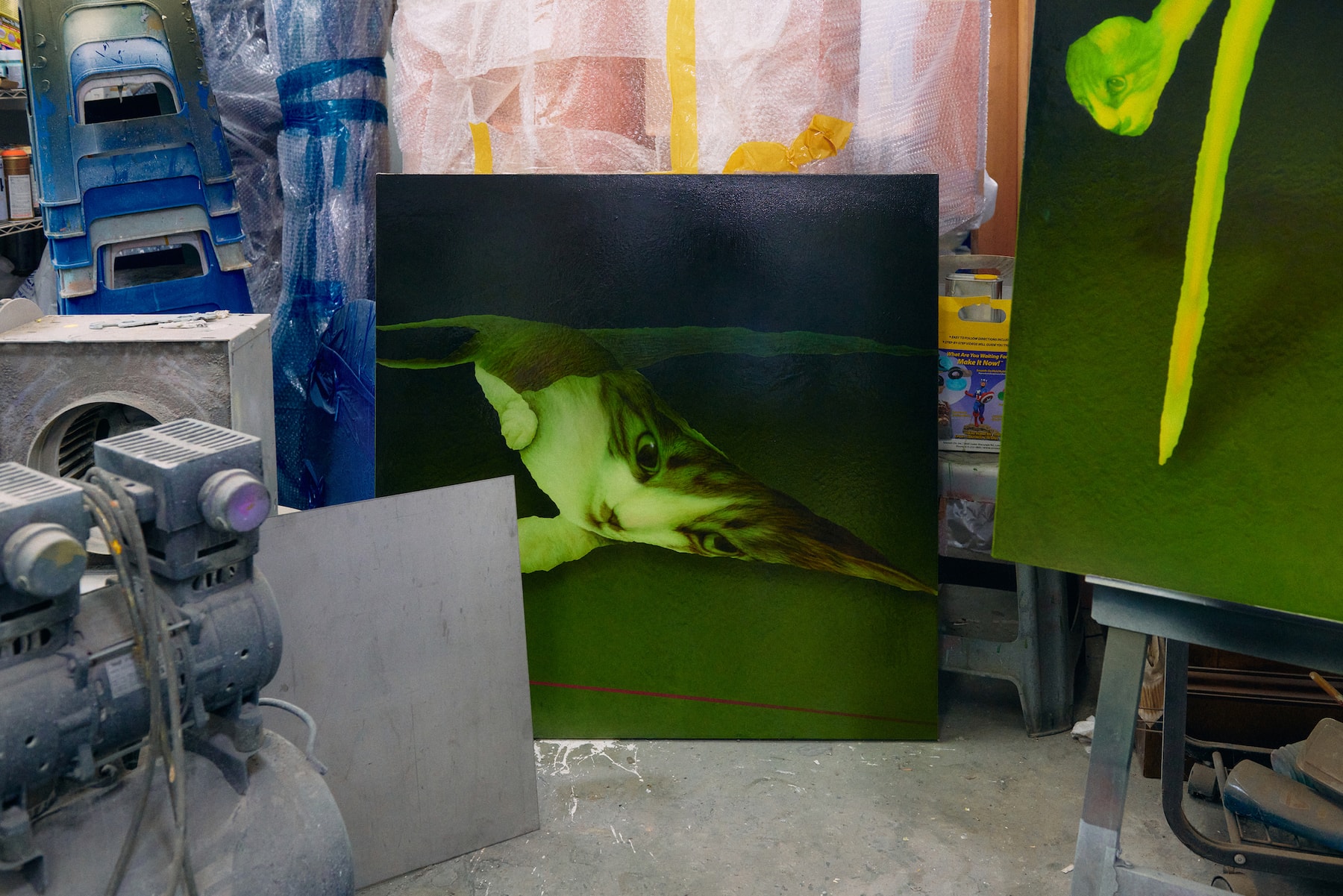
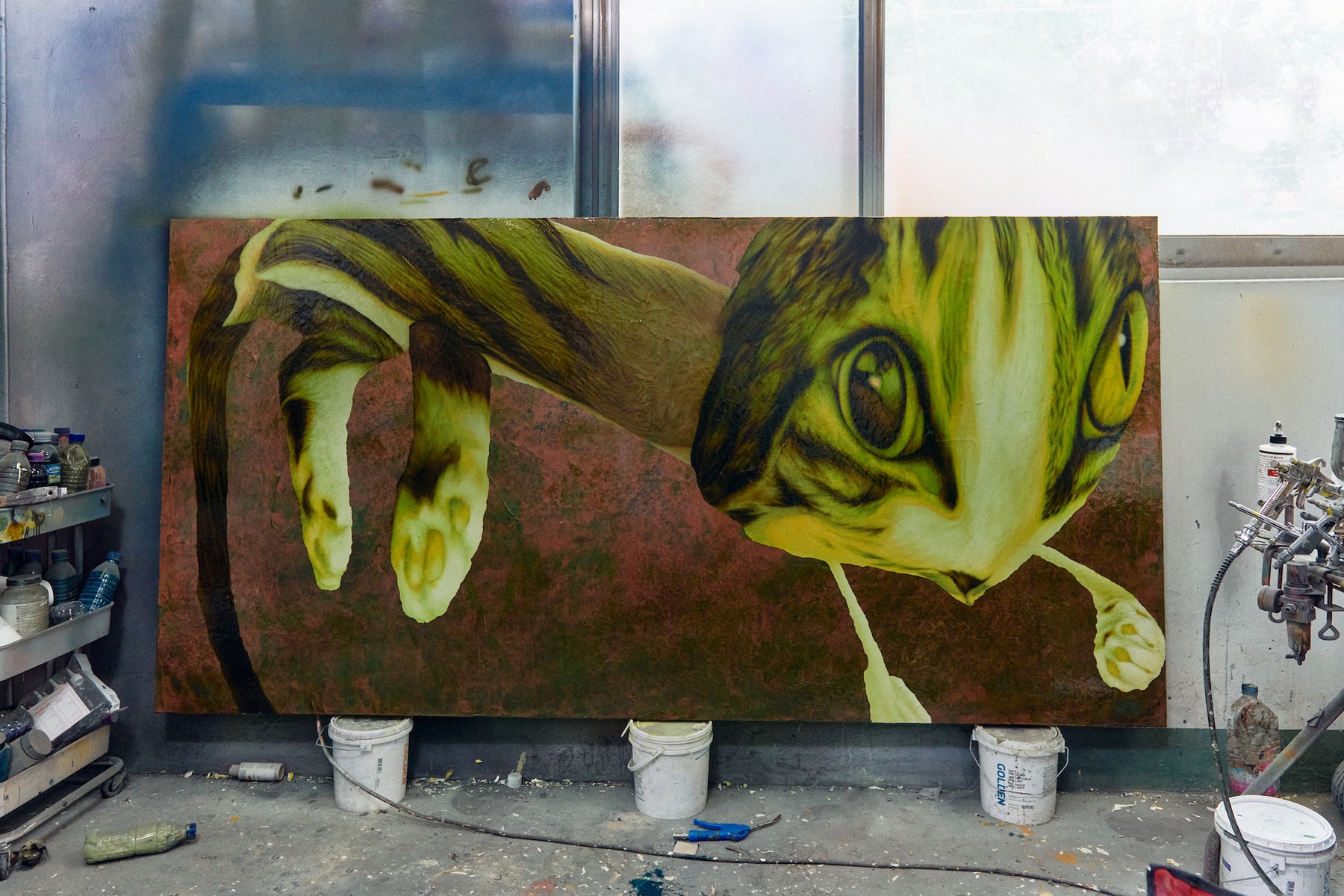
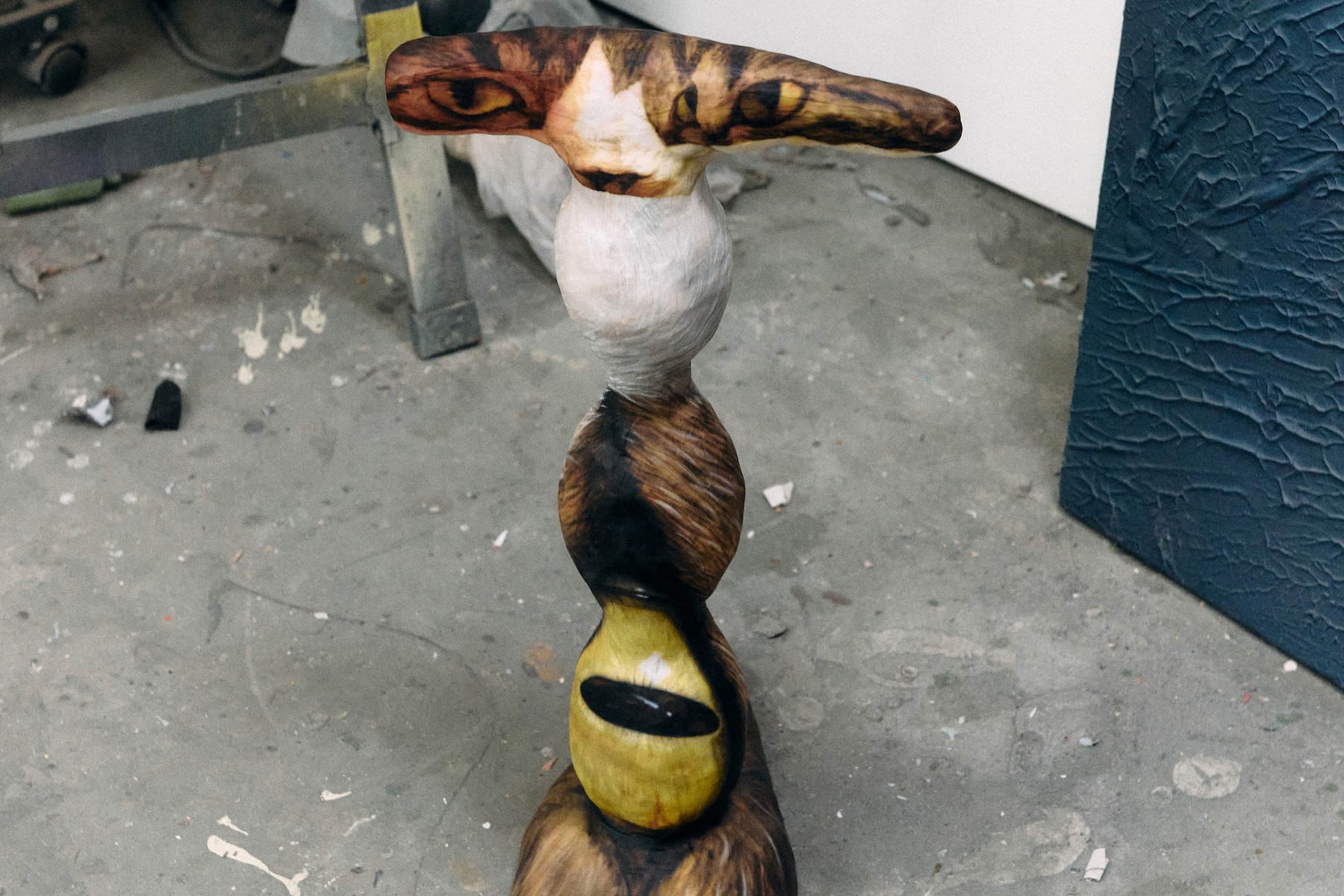
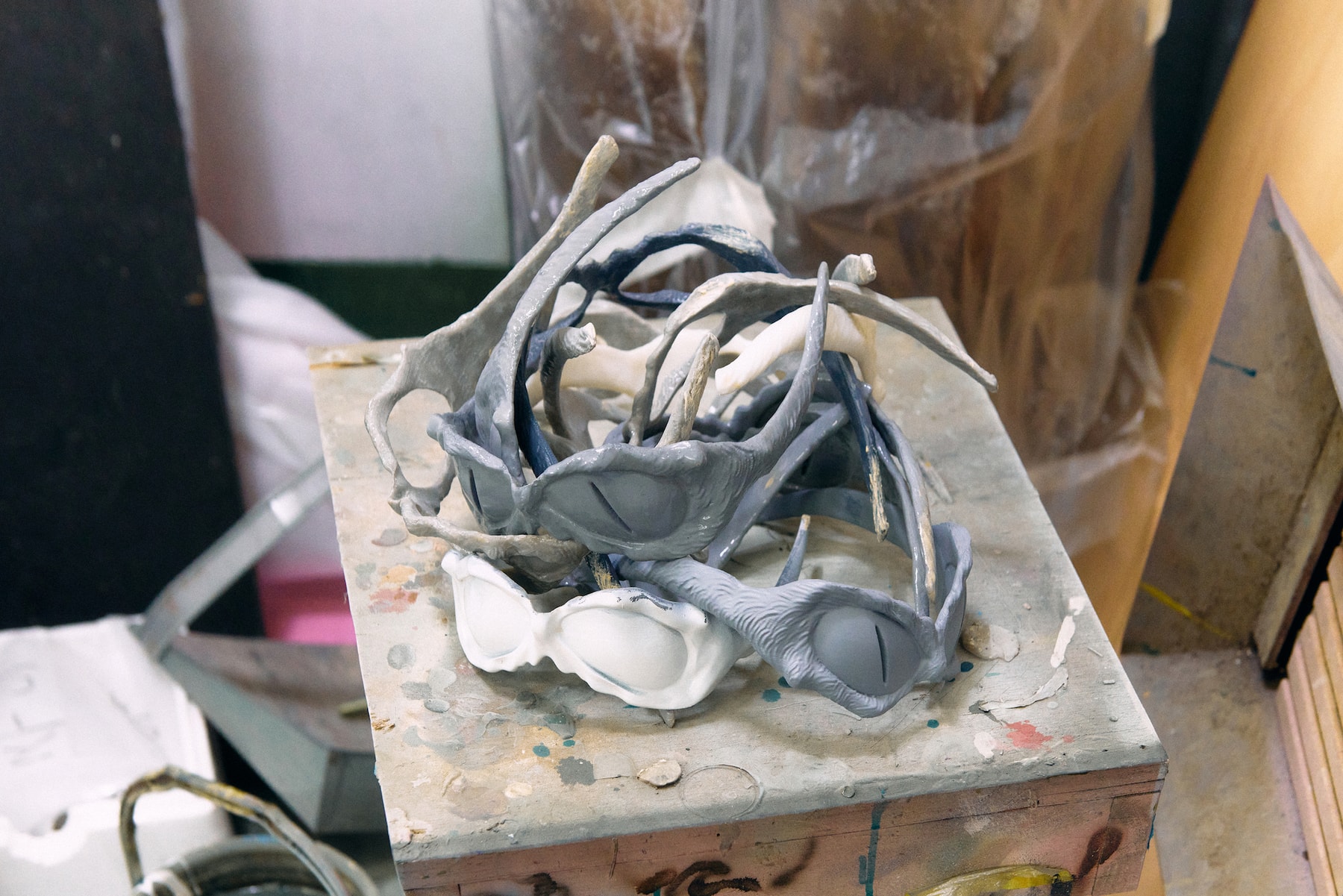

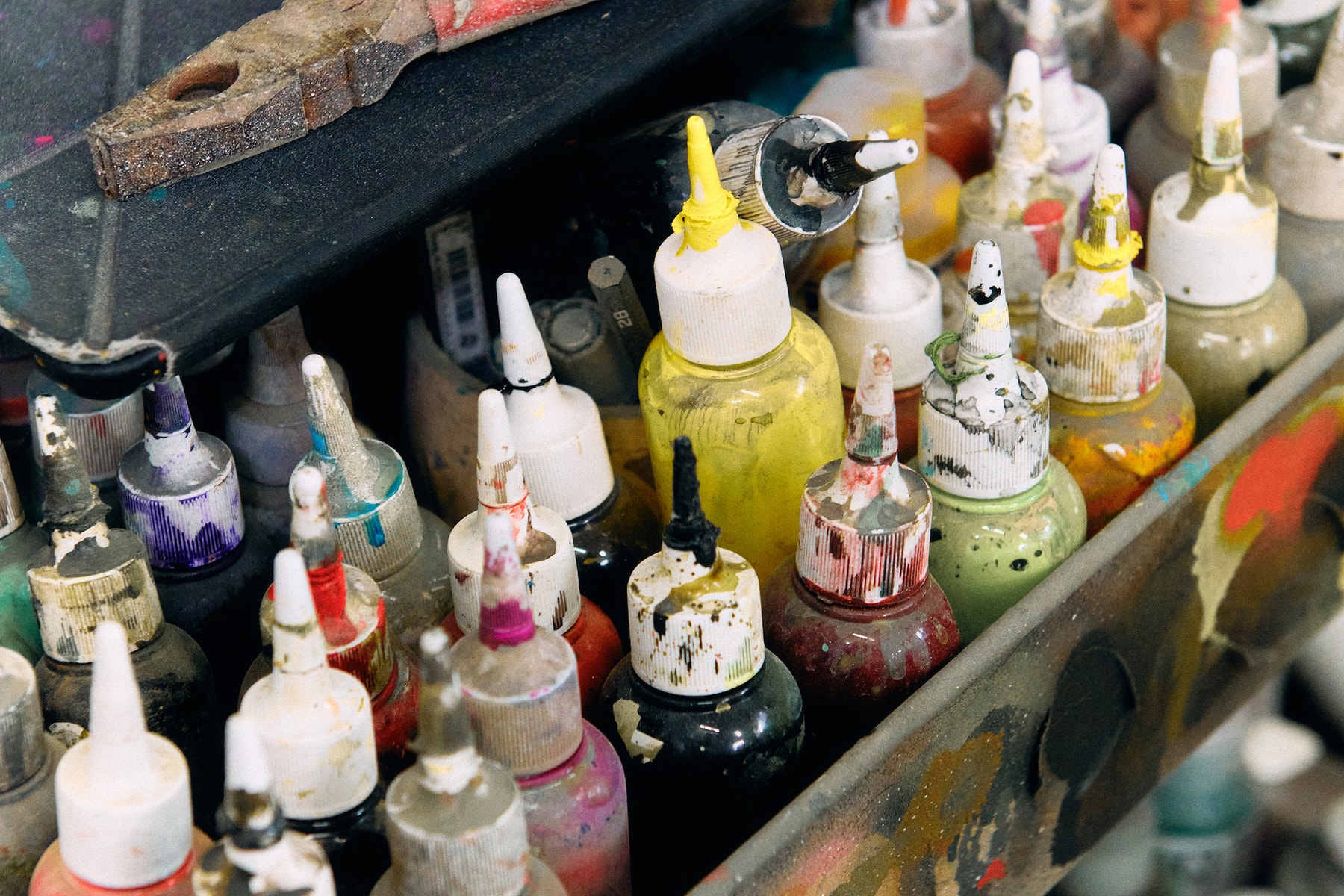
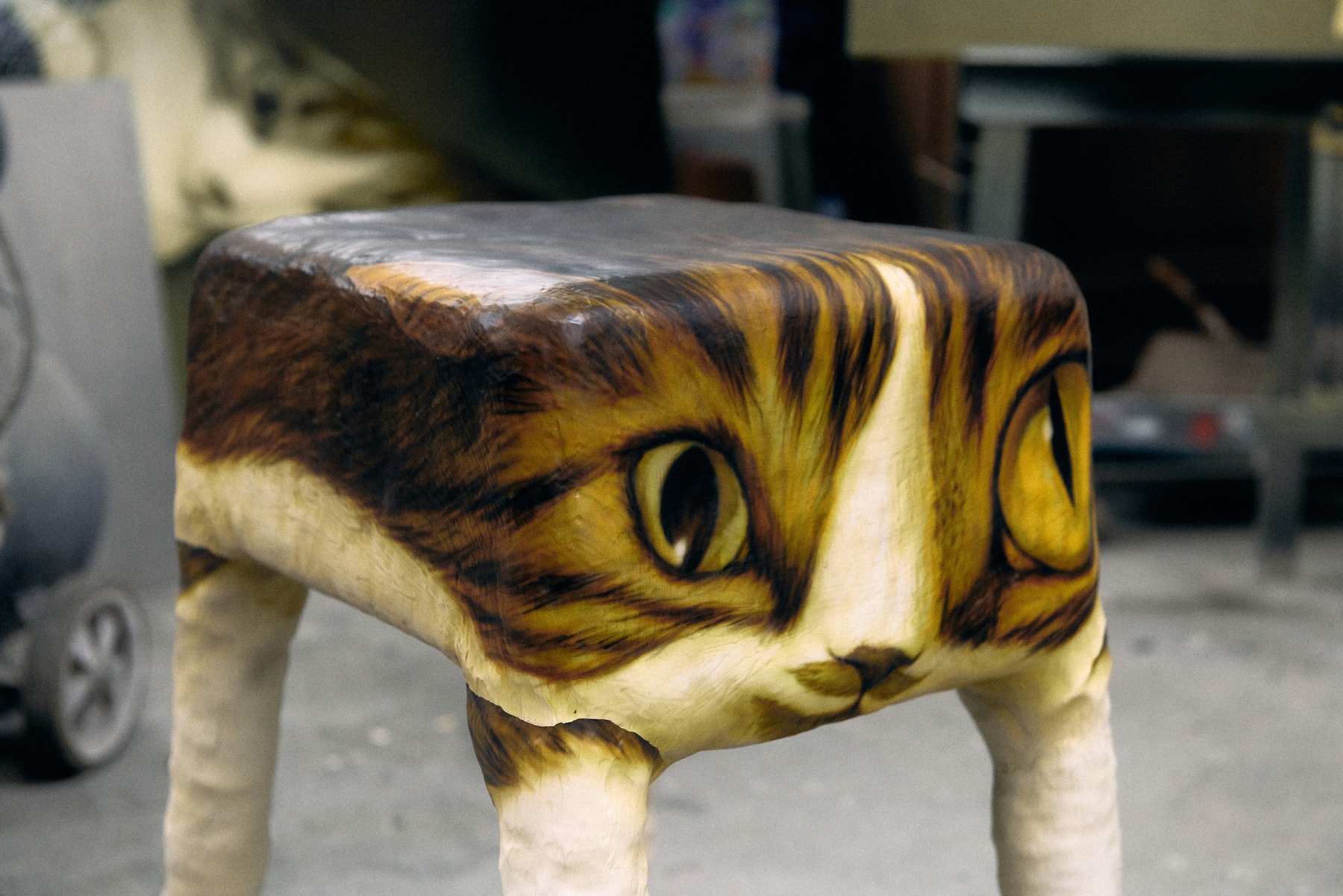
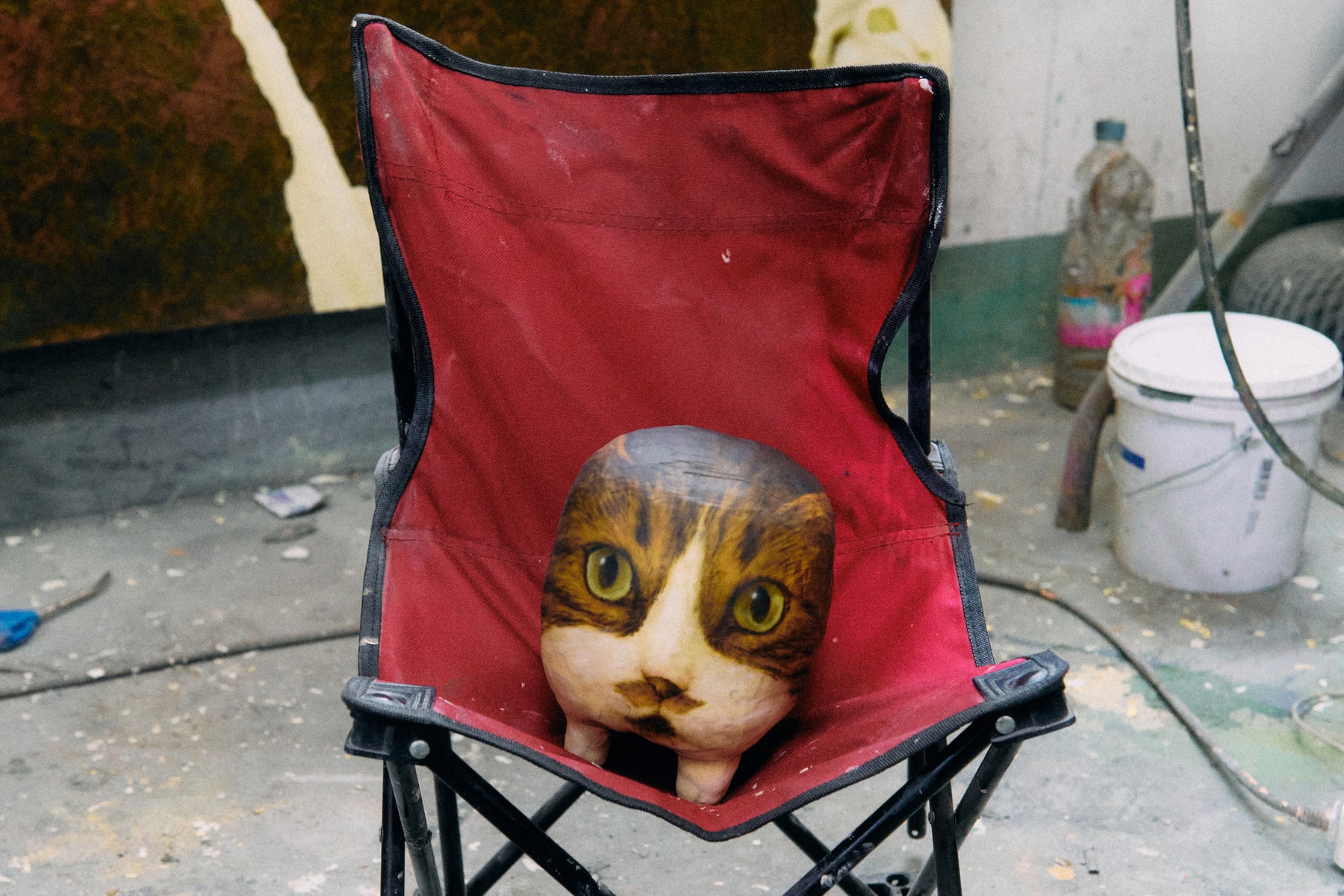
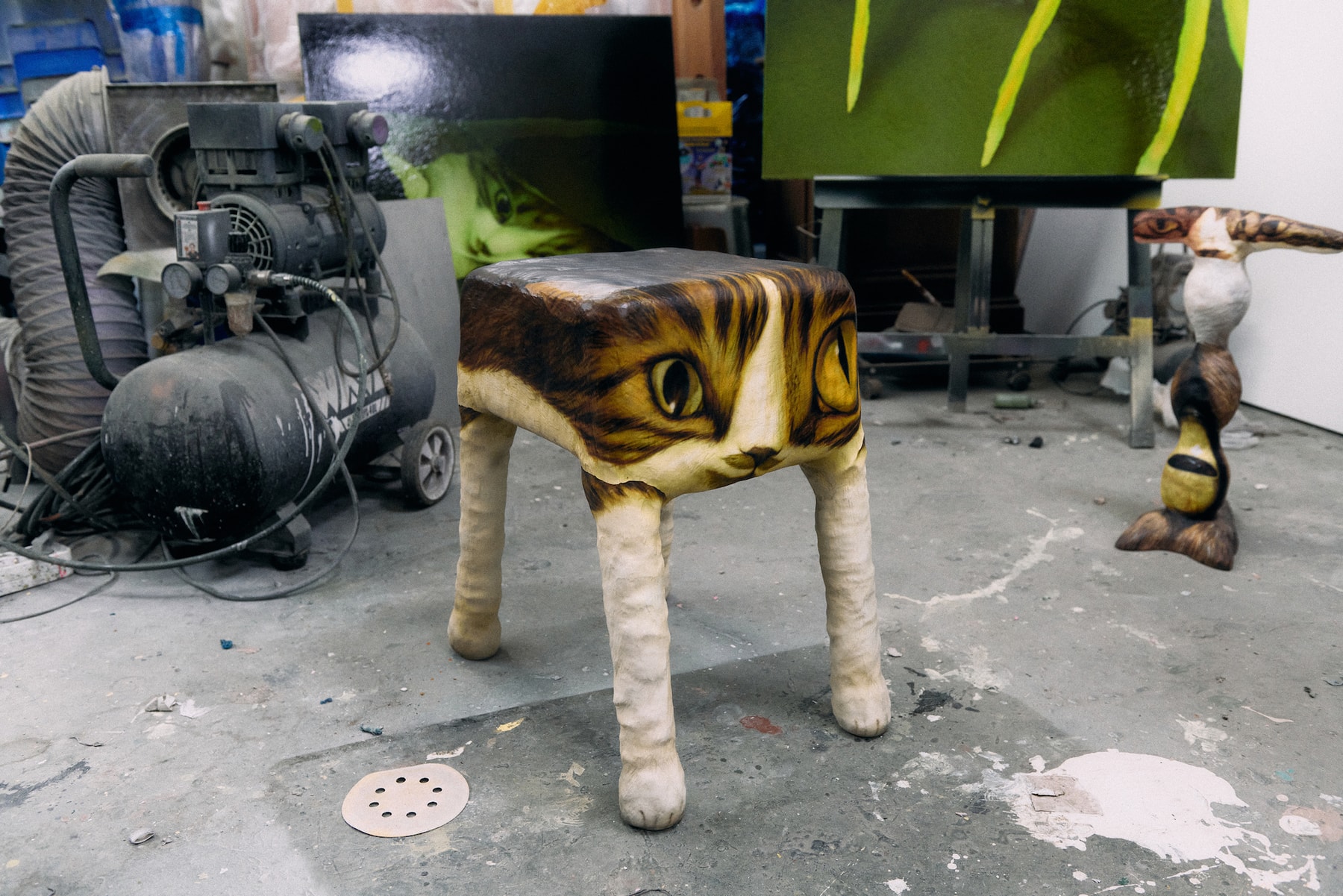
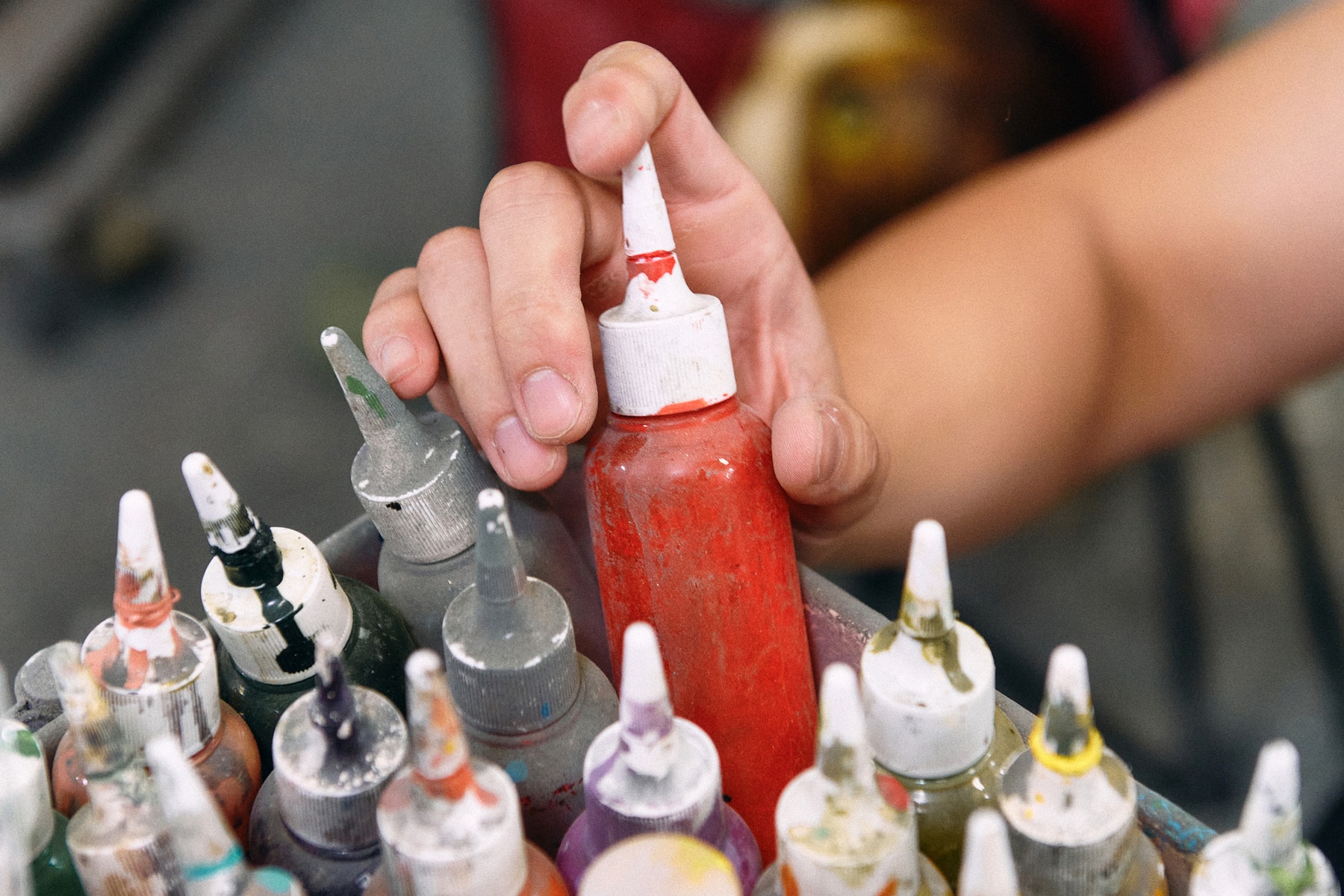
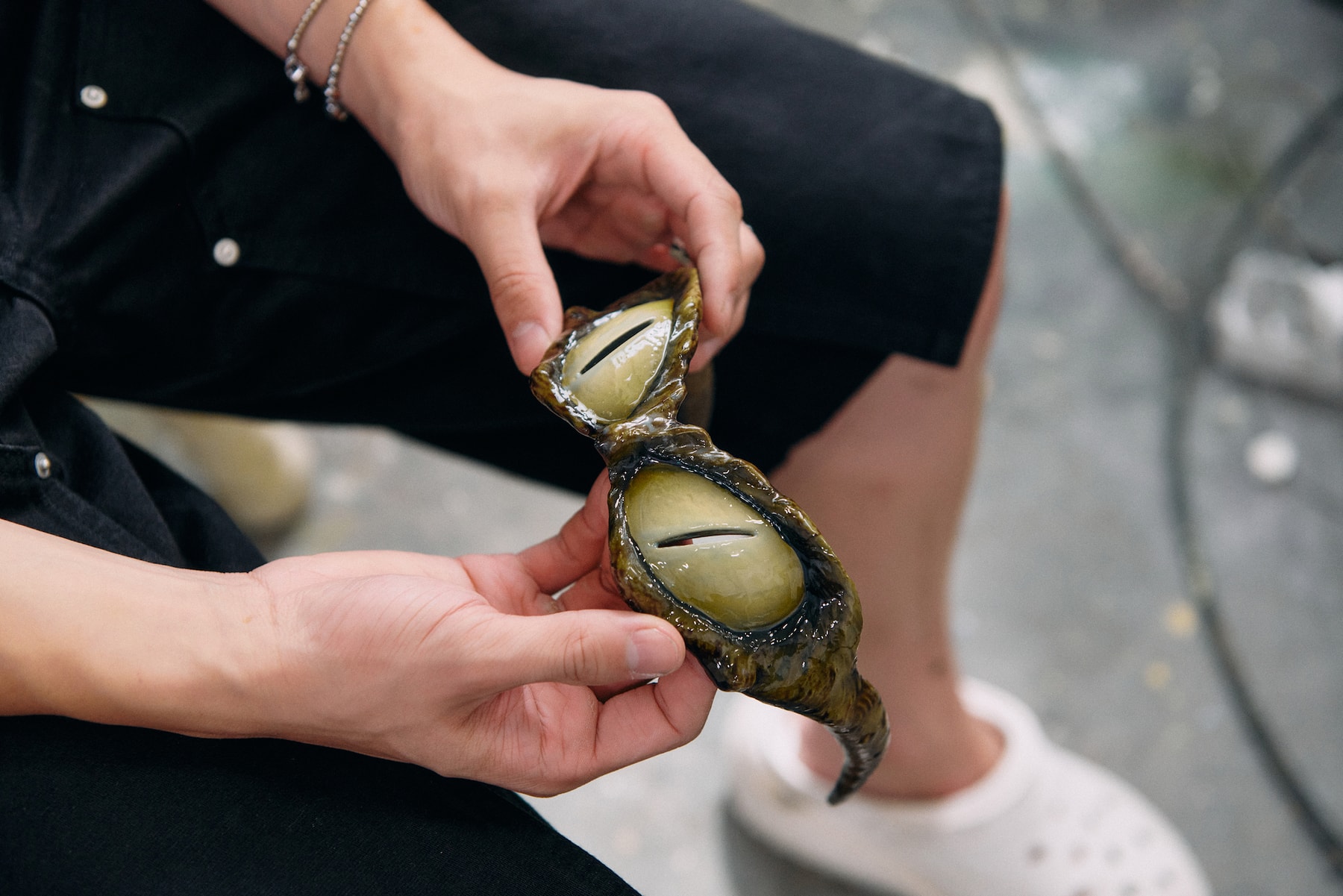
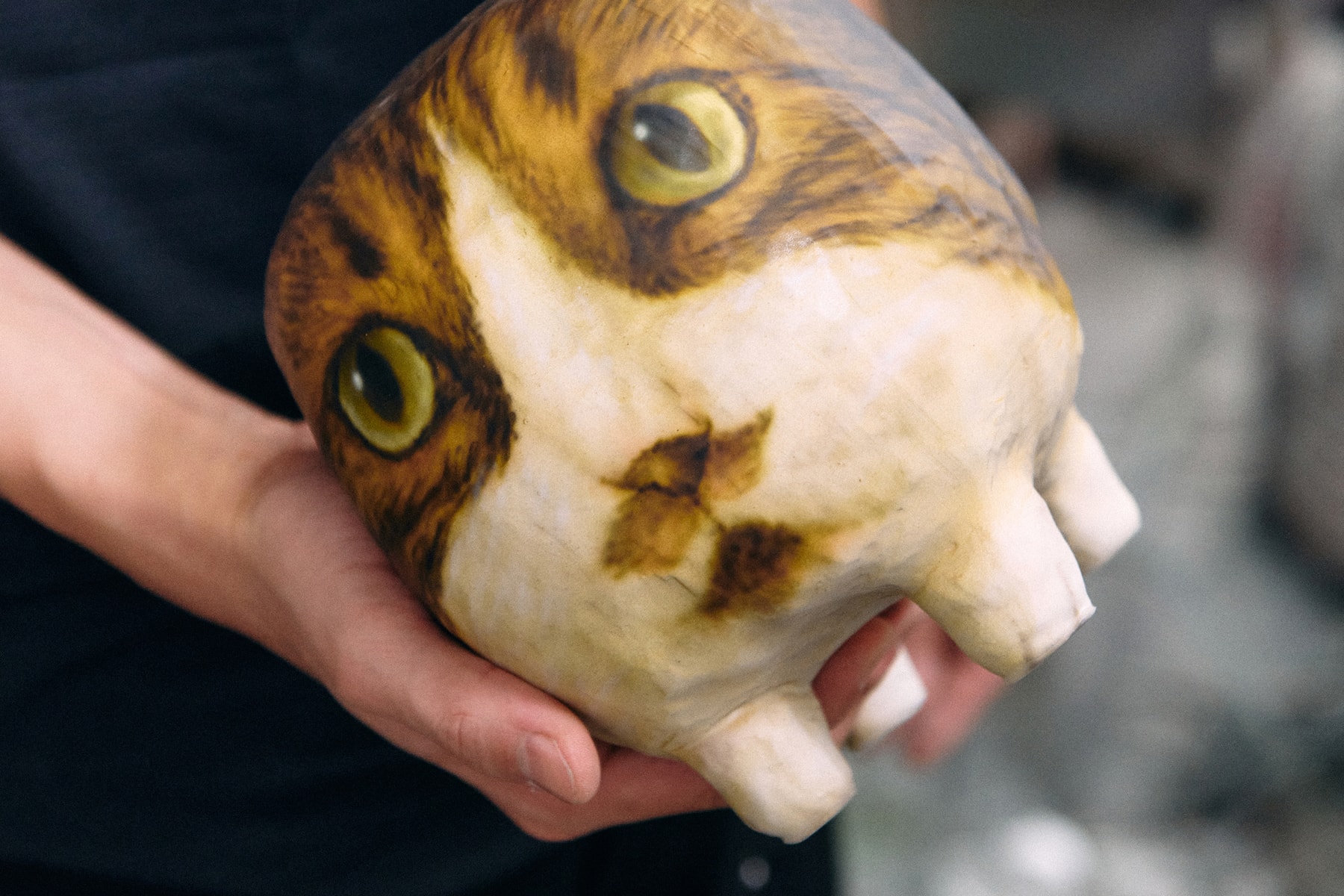

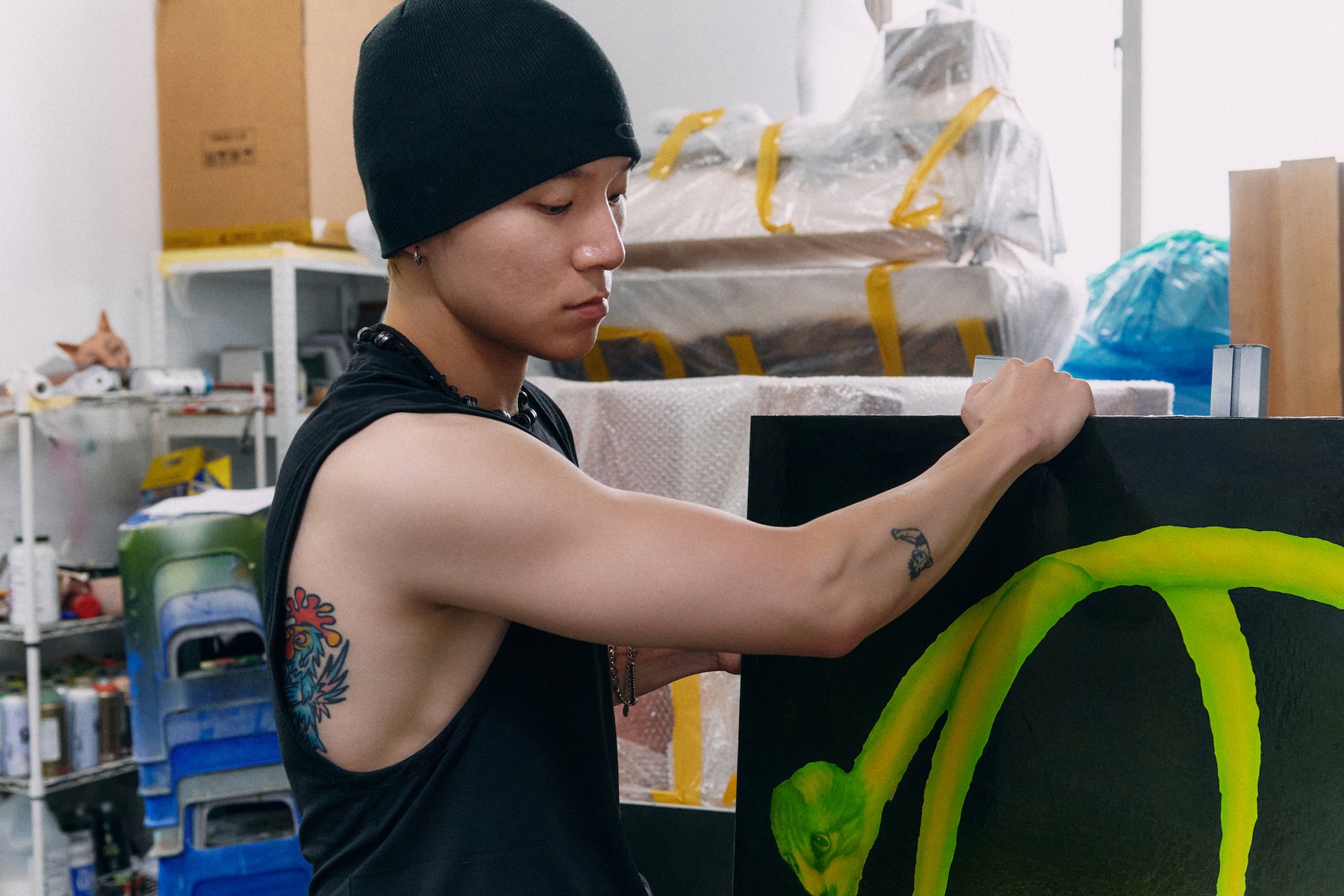
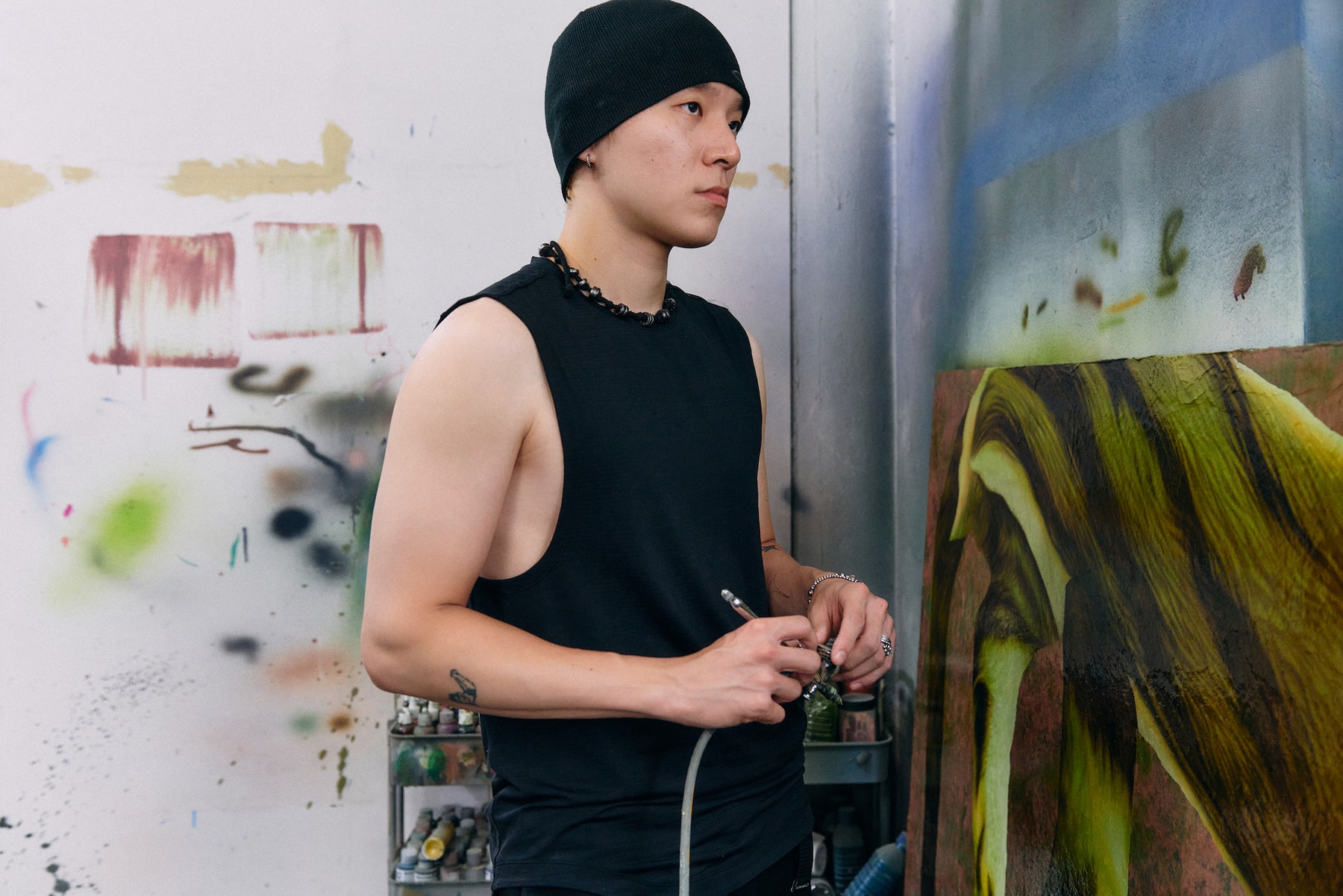
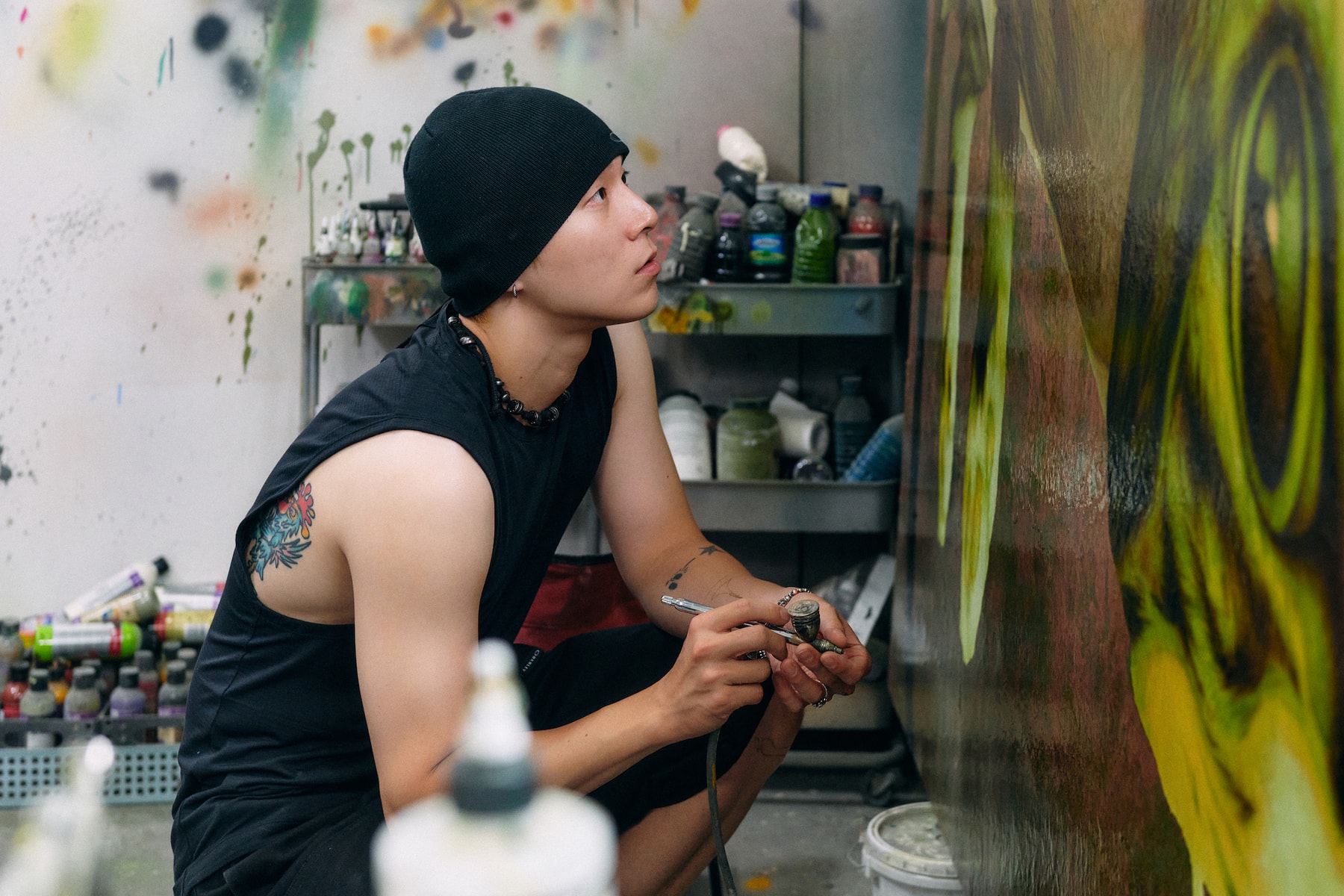
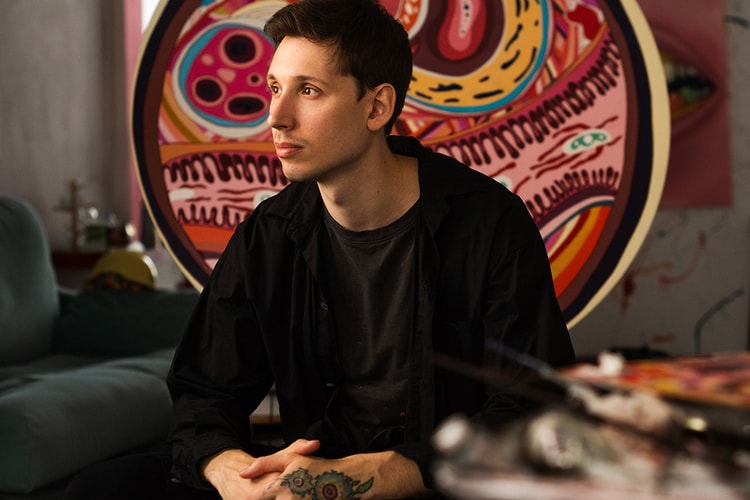
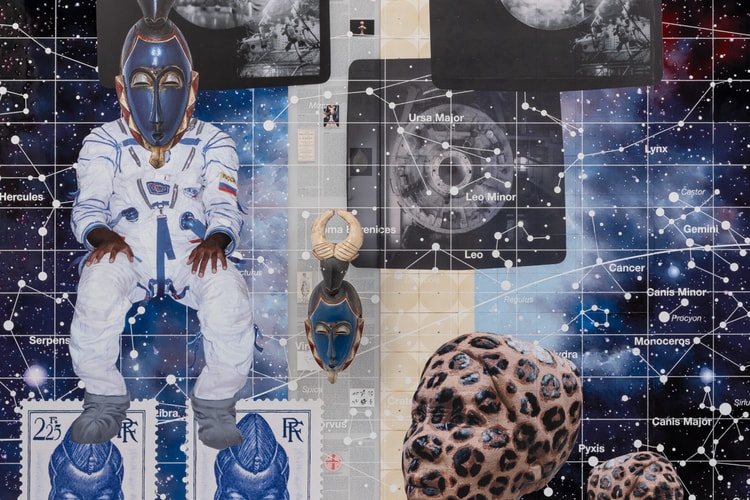
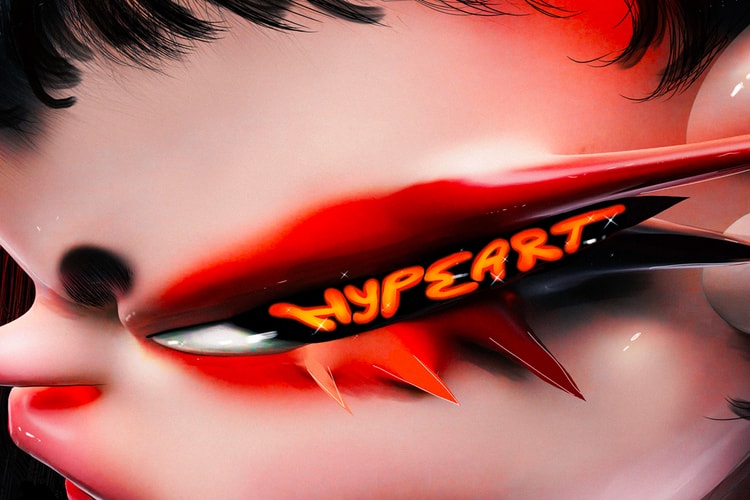
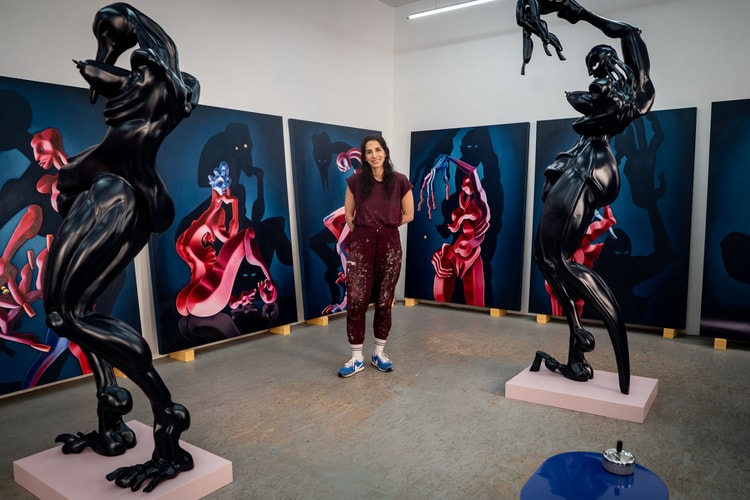
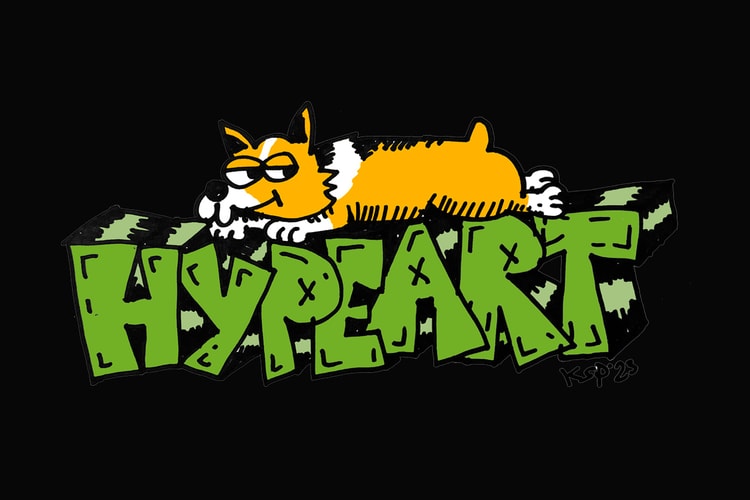

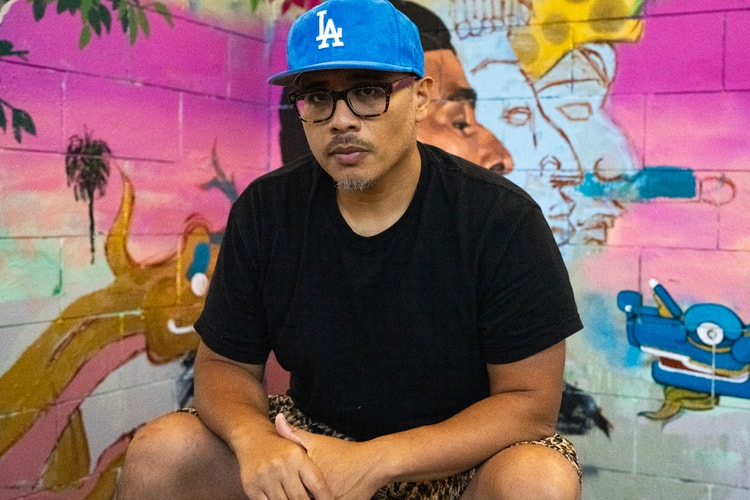

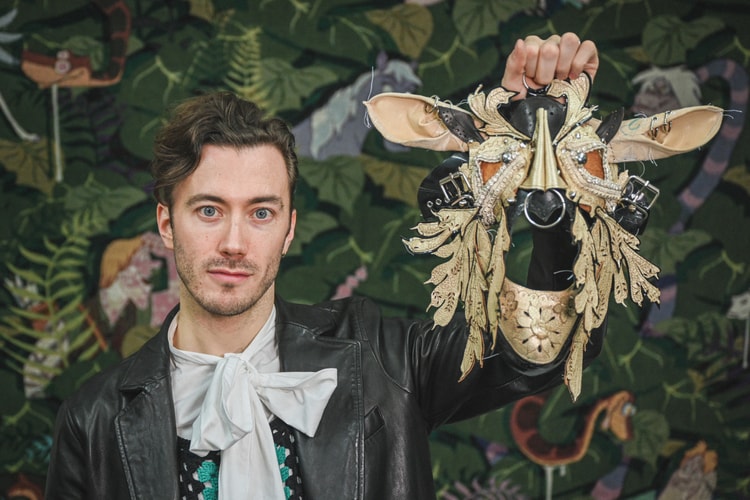
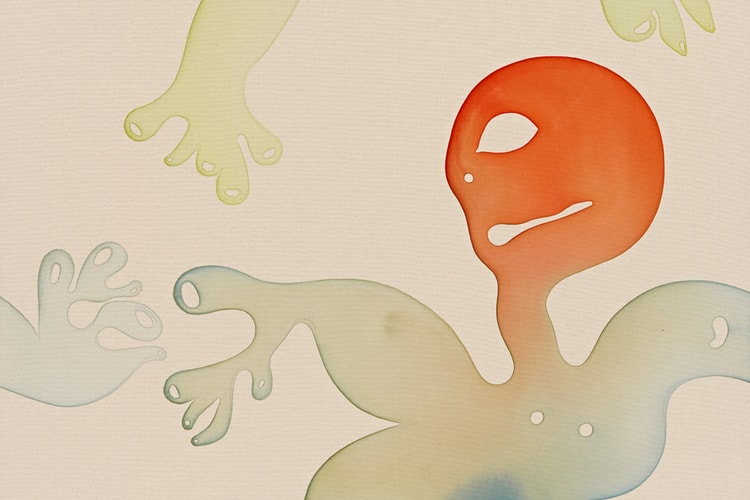
Scan the QR code to open the article on your device or within the Hypebeast App.